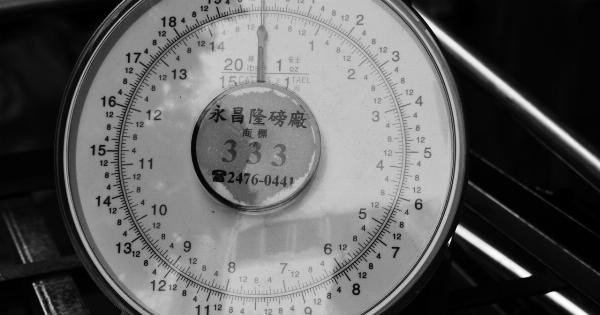Blood pressure measurement is a crucial part of assessing an individual’s overall health. It provides valuable insights into the functioning of the cardiovascular system and helps in identifying potential risks or issues.
While the accuracy of blood pressure readings depends on various factors, one important consideration is the selection of the arm for measurement. This article will discuss the importance of arm selection and provide tips on reading interpretation for accurate blood pressure measurement.
Why Arm Selection Matters?
When measuring blood pressure, the selection of the arm plays a significant role in obtaining accurate readings.
The arm chosen for measurement should be based on various factors such as the presence of medical conditions, surgical history, or physical limitations. Here are a few reasons why arm selection matters:.
1. Consistency
Consistency is key when it comes to blood pressure measurement. The arm selected for measuring blood pressure should remain constant throughout subsequent measurements.
Switching arms can lead to variations in readings, and this can impact accurate interpretation.
2. Medical Conditions
Medical conditions such as lymphedema, mastectomy, or injury can affect arm selection for blood pressure measurement. It is essential to choose the arm that is unaffected or less affected by these conditions to ensure reliable readings.
3. Surgical History
Individuals with a history of surgeries, specifically those involving the arm or shoulder, may have altered physiology in that region.
This can influence blood pressure readings, and it is advisable to select the arm that has not been affected by any surgical procedures.
4. Physical Limitations
Some individuals may have physical limitations such as paralysis, muscle weakness, or injury that can impact the selection of the arm for blood pressure measurement. It is crucial to consider these factors to ensure accurate readings.
Tips for Arm Selection
Now that we understand the significance of arm selection, let’s discuss some practical tips for choosing the appropriate arm:.
1. Start with the non-dominant arm
Most healthcare professionals recommend starting with the non-dominant arm for blood pressure measurement. This is because the dominant arm is usually more muscular, which can yield slightly higher readings.
Starting with the non-dominant arm provides a baseline for comparison.
2. Consider patient preferences
It is essential to consider patient comfort and preferences when selecting the arm for blood pressure measurement. Some individuals may have a history of trauma or anxiety related to specific arms.
By accommodating their preferences, the patient is more likely to be at ease during the measurement.
3. Assess the condition of both arms
Before selecting an arm, assess the condition of both arms. Look for any visible injuries, scars, or swelling that may indicate an affected arm. Choose the arm that appears to be in a healthier condition for obtaining accurate readings.
4. Communicate with the patient
Effective communication with the patient is crucial in ensuring accurate arm selection. Explain the rationale behind the choice of arm and address any concerns or questions the patient may have.
This helps in building trust and cooperation during the measurement process.
Interpreting Blood Pressure Readings
Once the blood pressure is measured, it is important to understand how to interpret the readings correctly. Here are some tips for reading interpretation:.
1. Systolic and Diastolic Pressure
Blood pressure measurements consist of two numbers: systolic (upper) and diastolic (lower) pressure.
The systolic pressure represents the force exerted on the arterial walls when the heart contracts, while the diastolic pressure represents the pressure when the heart is at rest between contractions. Both numbers are essential for proper interpretation.
2. Normal and High Blood Pressure
The American Heart Association (AHA) has established standard categories for blood pressure readings. According to the AHA guidelines, normal blood pressure is defined as a systolic pressure less than 120 mmHg and a diastolic pressure less than 80 mmHg.
High blood pressure is categorized into stage 1 (systolic 130-139 mmHg, diastolic 80-89 mmHg) and stage 2 (systolic 140 mmHg or higher, diastolic 90 mmHg or higher).
3. Interpreting Fluctuations
Blood pressure can vary throughout the day due to various factors such as stress, activity level, or medication. It is important to consider these fluctuations and identify any consistent patterns.
Multiple readings taken over time provide a more accurate representation of an individual’s blood pressure.
4. Professional Guidance
Interpreting blood pressure readings correctly may require professional guidance.
Healthcare professionals, such as doctors or nurses, have the expertise to assess the readings in the context of an individual’s overall health and provide appropriate recommendations or interventions.
Conclusion
Accurate blood pressure measurement is crucial for assessing an individual’s cardiovascular health. The selection of the arm for measurement plays a significant role in obtaining reliable readings.
Considering factors such as consistency, medical conditions, surgical history, and physical limitations helps in choosing the appropriate arm. Additionally, understanding how to interpret blood pressure readings correctly ensures accurate assessment and appropriate interventions if needed.
By following these tips, healthcare professionals can improve the accuracy of blood pressure measurement and enhance patient care.






























